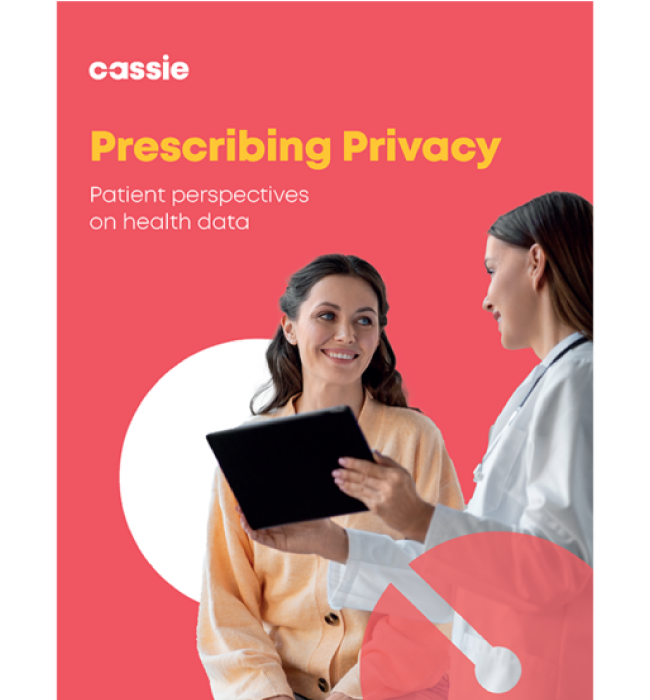How to implement patient-centered communication
Posted: October 14, 2023
We all agree that healthcare typically works at a hectic pace. Hastiness hampers picking up information on an individual patient and abruptly distracts providers to the point where patient care results in lackluster outcomes.
A crucial communication skill that providers can utilize is active listening, which requires listeners to pay undivided attention to the person speaking. In healthcare, active listening means providers are all ears to patients’ concerns and preferences, thereby they can pick up on both verbal and non-verbal cues to make a conscious decision.
The role of active listening in effective communication
Active listening enhances providers’ understanding of patient concerns and improves overall healthcare outcomes. With the varied application of effective communication in healthcare, some grounds become crucial for providers to understand and thoughtfully practice. Let’s understand the key areas.
It reduces the incidence of misunderstandings
Active listening techniques involve giving undivided attention to the patient’s concerns. Active listening to the patient’s symptoms combined with family members’ comments helps derive a clear picture of the patient’s perspective, their underlying emotions, and the true nature of their concerns.
When healthcare professionals engage in repetitive conversations with patients, it helps reduce the inconsistencies in the conversation. Furthermore, it helps connect the dots and cut out messages that could have more than one meaning. By carefully listening to the patient’s explanations, providers can identify and address any underlying misconception, reducing the risk of misunderstandings related to diagnoses.
It enables better care
Active listening brings in all the senses of the listener to use and picks cues on the slightest of the patient’s response to read between the lines and fill in the blanks with information not disclosed by mere spoken word. Active listening enables providers to transcend simply listening for specific knowledge and avoid making assumptions.
When patients find providers deeply engaged in their care, they share their concerns openly. This open dialogue encourages patients to share their concerns openly. With patients’ root causes of the problems identified, providers can address their unique challenges and enable better care.
It diminishes anxiety and boosts confidence
Active listening bypasses the rushed way of shuffling paperwork to comfort patients with body language like making eye contact, smiling, and sharing words of sympathy. This kind of human-to-human interaction does away with patients feeling alienated and rather instills feelings of physicians or nurses genuinely caring.
This focused, patient-centered approach creates a sense of full connectedness. It eases the nervousness of patients and encourages disclosing sensitive information and asking questions that otherwise might get suppressed out of fear or anxiety. Patients who feel comfortable will be more likely to be vocal and open about their innermost concerns.

Download our ‘Prescribing privacy’ research report
We spoke with US consumers to explore customer trust and the level of confidence that consumers have in the healthcare system’s ability to safeguard data.
This report also covers:
- How news-reported data breaches impact consumer emotions
- How they evaluate healthcare providers for data security
- Actions that healthcare providers can take to build customer trust whilst challenging the complexities of data privacy
Promoting shared decision-making
Active communication in healthcare is part and parcel of shared decision-making. It involves listening actively to patients, understanding their message, and clarifying questions without judgment. It acknowledges that patients are well aware of their own experiences and preferences, while healthcare professionals bring medical expertise to the table.
The provider’s communication with patients helps evaluate the patient’s views on the available options. Based on interactions, providers can tailor their messages in ways that promote productive discussion during the decision-making process.
Instead of providers alone making decisions on behalf of patients, shared decision-making encourages patients and providers to collaborate and make unified decisions. Especially in situations where the treatment options rely on incorporating the patient’s preferences and values, shared decision-making is the most appropriate choice.
This process involves a two-way dialogue where providers communicate medical information to patients, providing patients with evidence and statistics of success about the available treatment options and expected outcomes. Equipped with knowledge, patients are able to make informed decisions aligned with their needs and preferences.
Honoring patient preferences and values
Providers’ attentive listening to patients’ experiences makes them feel heard, understood, and respected. A patient-centered approach emphasizes understanding and respecting the patient’s personal needs, preferences, and goals. It shifts the focus from solely relying on the provider’s expertise to the patient’s experience, empowering patients to actively participate in the shared decision-making process.
Focus on the patient’s perspective
Focusing on a patient’s perspective can reveal a wealth of information for providing effective and personalized healthcare. Misunderstandings in comprehending a provider’s message often act as a roadblock to making informed decisions. By actively listening to the patient’s response to treatment plans, providers can uncover adverse effects and make adjustments accordingly.
Establish a respectful environment
A respectful environment in patient-centered communications fosters trust, collaboration, and positive healthcare outcomes. When providers provide a supportive space for patients to share their values, they feel heard and empowered to participate in decision-making. It involves conducting a conversation in a private setting to respect the patient’s privacy and confidentiality. Assuring the patients that their personal information is safe and can’t be disclosed to anyone without their consent works like icing on the cake.
The role of technology: benefits and challenges of incorporating technology in healthcare communication
Clear and effective communication is of paramount importance in healthcare. With technology finding unavoidable grounds in healthcare, providers can leverage digital tools and platforms to facilitate collaborative decision-making in the healthcare setting.
Following the COVID-19 pandemic, there has been an accelerated shift in remote consulting and the use of telehealth technology for virtual collaboration and online sharing of information. Breaking down geographical barriers, telemedicine services, and remote patient monitoring have led to increased patient engagement, timely interventions, and improved management of chronic conditions.
While technology offers tons of benefits, its integration into healthcare communication poses challenges with human connection and empathy, data literacy, and access disparities, as well as the potential for misinterpretation and bias.
Human connection and empathy
The role of technology should be to complement human interaction, not replace it. If a balance is not maintained between technology-driven communication and in-person interaction, it can impact personalized support and empathy, ultimately affecting shared decision-making and informed consent.
Data literacy and access disparities
Effectively navigating healthcare technology requires digital literacy. Not all patients are tech-friendly, especially generation X. The digital divide can exacerbate existing disparities in healthcare access and outcomes. Their inability to access and use patient portals and telehealth services can delay diagnosis, leading to poor health outcomes.
Potential for misinterpretation
Digital communication often lacks the nuances of nonverbal cues and emotional context, which are intrinsic to the accurate interpretation of messages. Their absence complicates the assessment of patient comprehension and the reckoning of potential misunderstandings. If patients and providers are of diverse linguistic backgrounds, machine translation may introduce misinterpretations when dealing with complex medical terminology or nuanced cultural expressions.

